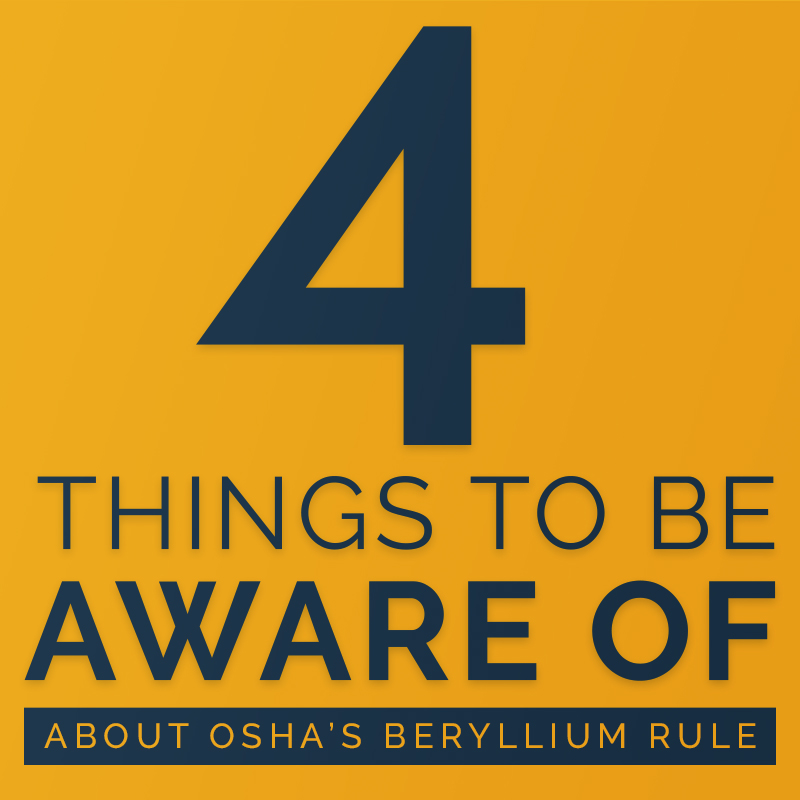The Abrasive Blasting Manufacturers Association (ABMA) was created to address the overreaching nature of OSHA’s new beryllium rule. To that end, ABMA had reputable labs test all the common forms of frequently used blasting media to determine if they contained beryllium.
Below are the four fundamentals to be aware of, including what the ABMA data means.
- The new triggers in the OSHA rule are so low, that even materials with very low amounts of beryllium could cause them to be met, causing this rule to be needlessly overreaching.
- Some abrasive media manufacturers, such as those that produce glass abrasive media, have erroneously claimed that their material is beryllium free. The testing conducted by two independent labs confirms that all forms of blasting media contain beryllium at levels that could trigger the OSHA PEL or STEL, including glass abrasive media. Further, historical testing methods may not have the level of sensitivity to detect beryllium or other elements at the low levels required by the current rule. Make sure your testing method has a degree of sensitivity that will measure to the rule’s Action Level.
- The form of beryllium matters. The OSHA rule was developed because of health and safety issues in the beryllium alloy industry where they produce components for the nuclear and aerospace industries. There are well-documented instances of beryllium-related disease and sensitivity when working with beryllium alloys.
- To the best of our knowledge, in the 80 years that coal slag has been used as an abrasive media, there are no known cases of beryllium-related illness or sensitivity for anyone working at an abrasive manufacturer or an abrasive blaster.
To learn more, read sponsored content on PaintSquare on the beryllium rule.
As new data becomes available, we will continue to publish it on our website for abrasive products at blackdiamondabrasives.com and on us-minerals.com.

